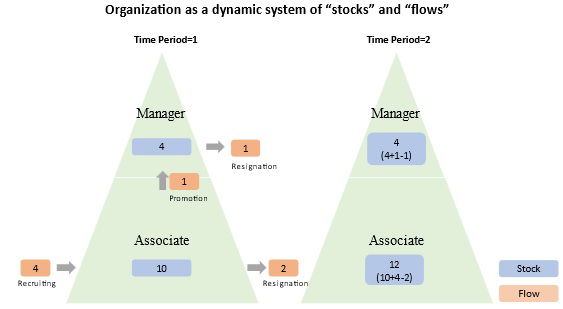Strategize your workforce planning

Headache of organization leaders
If you are an organization leader in a professional service firm, have you ever observed the following in your organization?
- I have realized there are fewer junior people in my team this year than there use to be a few years ago
- While I have not noticed, people are getting senior. It is getting a bit difficult to build a project team i.e., a good mix of junior and senior talents

One reason is a high turnover rate. Professionals have a sense of independence and do not hesitate to leave if they do not find an opportunity to grow. Another reason might be that you are underestimating the speed of existing member to grow. As you are busy to oversee your team's performance, It is not easy to have full visibility of all the members growth at granular level. You might have forgotten the fact that you need more fresh associates unless you track their skill developments.
Workforce planning is a mandatory exercise to keep your organization aligned with business strategy
Despite many leaders creating headcount plans in spreadsheets, they tend to be an procedural allocation of corporate budget. Although top-down planning is necessary to control labor costs, that information won’t be able to give any insight into the following questions:
How many managers do we need to grow our business in five years?
How many people should we hire from lateral to achieve this, or how many people will be managers through natural growth?
Will the number of managers in five years be enough to execute our expanded services?
In summary, workforce planning should be linked to the long-term business goal!
Point of view 1: Workforce Planning aligning with Strategy
It is important to equip capability to create long term workforce plan that is consistent with their strategic goal. Underestimating turnover and promotion of employees causes huge gap with desirable speed of organization growth. The gap is difficult to detect earlier because the process to grow employees is long-term exercise and opportunity cost from losing them comes suddenly.
Point of view 2: See your organization as dynamic system of sock and flow
If the industry in which you work is talent intensive e.g., professional services, it is making sense to see your organization as an dynamic system that consists of stock and flow of talents. Compared to other industries, the volume and quality of the service highly depends on deployment of people. To keep the organization up-to-date, firms are actively replacing talents with fresher ones. People are expected to grow quicker and leave the firm if they don't grow as expected. In other words, the organization evolves itself by absorbing new resources (hiring), strengthening their muscles and brain(educating and promoting) and discharging waste products (retiring).

Point Of View 3: Collect and manage data about workforce dynamics
For your professional service to be successful in the market place, It is essential to track evolution of size and structure of your organization. You can collaborate with HR team to collect and manage data about workforce dynamics e.g., average years to promote or retention rate by job title. With the basic metrics to explain career progressions in your organization, you will be able to create forecast of headcount more granular level. This will help your recruiting plan aligned with your business growth plan.
Conclusion
In talent-intensive industries, workforce planning connects strategic goal with human resource investment such as recruiting and training. Thinking your organization as a dynamic flow of talents will help to make better decision about recruiting and training. To do this, you need data management and analytics operations around HR data. In the next series of articles, I will walk you through a framework to strategize your workforce planning.
Reference
Bartholomew, D.J., Forbes, A.F., & McClean, S.I. (1991). Statistical Techniques For Manpower Planning Second Edition. Wiley.